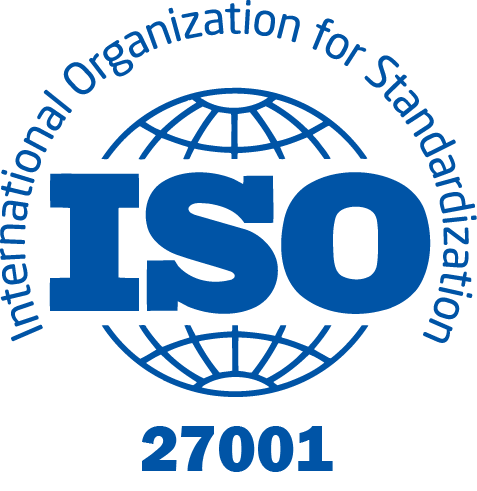Technology is evolving quickly and new consumer habits are being created every day. For a brand, migrating an e-commerce platform is the promise of better performance, faster international roll-outs, or simply better conversion rates and revenue.
In general, brands take every precaution to set up the new shopper journey, improve SEO and organize the product catalogue... but the migration of customer accounts is often at the bottom of their deployment plan. Yet this is a crucial element for the success of any re-platforming project because no active customer accounts on the new web platform, equals no more customer business, and no more first-party customer data!
CIAM is a key element in supporting brands in the management of customer identities and these companies to:
1. Federate customer identities
In 2020, a customer is no longer divided into "online" on one side and "offline" on the other. They're now considered as one and the same. As brands mature, they strive to have a centralized and in-depth view of their customers' profiles at all points of contact. A recent study run by ReachFive shows that 81% of consumers surveyed expect the same experience on all channels [1]. A change of platform is often the best time for brands to rethink their customer approach, and federate both online and offline customer identities.
In order to have multi-channel account management and gain flexibility, brands should equip themselves - early on, or at the very beginning of the project - with a CIAM solution capable of unifying and centralizing the management of customer identities and accesses, whatever the contact point.
A Customer Identity and Access Management (CIAM) solution, like ReachFive, makes it possible to authenticate a customer, collect their verified identity data, reconcile the various accounts scattered over multiple channels and redistribute this information securely throughout the brand's ecosystem. The customer is automatically recognized and the data is linked as they interact with the brand in-store and online.
2. Accelerate e-commerce migration projects
Even if today the trend is to manage customer accounts, in a subtle way, with progressive data collection, the constraints are different from one web platform to another. Some brands - which still use authentication solutions requiring dozens of pieces of information to create a customer account - naturally take longer to adapt.
Using a CIAM solution like ReachFive can allow them to free themselves from all the technical constraints related to account migration and identity management, and considerably speed up their migration project. In the context of a digital transformation project, saving a few weeks, or even months, is a decisive competitive advantage for the entire ecosystem (technology partners, integrators...). Customer identity is first housed in the CIAM solution, and then provisioned to the web platform, only when the entire the client area is created. By limiting the data collected at various parts of the shopper journey, by structuring it progressively, and without requiring the visitor to open an account to finalise their purchase, CIAM solutions increase customer satisfaction and the acquisition numbers.
CIAM makes it possible to centralize customer identity, and modernize the urbanisation of the IT stack and its many components. A valuable time-saver, particularly in the context of a digital transformation project!
Finally, if a brand plans to migrate again for a more agile solution, usually between two and five years later, customer accounts will naturally be migrated and re-provisioned by the CIAM platform.
3. Avoid customer frustration
For technical reasons - including hash algorithms that are often incompatible across platforms when migrating - brands often require customers to reset their passwords. A strong limitation when we know that authentication and repeated sharing of personal data are real friction points in the digital customer journey. 55% of those surveyed in a ReachFive report say they have to re-give their personal information regularly to be recognized as a customer and 41% have had to re-identify themselves, via login and password, during an online purchase, leading to a shopping cart abandonment for 3 out of 4 shoppers. Sometimes, brands have no choice but to maintain the old and new platform during a transition period, thereby considerably increasing the complexity and cost of the project.
A CIAM platform has the ability to interpret a multitude of different hash algorithms, making platform migration completely transparent to the customer, who no longer needs to recreate a password.
4. Better security and more modern authentication methods for customers
E-commerce related attacks directly targeting online shoppers - focusing on their login credentials, passwords, card numbers, phone numbers etc... - increased by 15% in 2019 compared to the previous year [2]. Today, the number of authentication methods is limited on e-commerce platforms that manage many customer accounts. The majority only offer authentication via email/password, very few are able to offer authentication via mobile number/password or alternative connectors (social or payment), while authentication via passworldless is almost non-existent. However, 70% of users say they have difficulty remembering their password [3] and 90% would prefer to opt for new, more secure solutions, including two-factor authentication (69%) and biometric identification (66%) [4].
As a trusted third party in managing the security of customer accounts, ReachFive enables innovative, fluid and secure experiences with modern authentication methods, going beyond the traditional identifier/password combination, which is often the source of friction. Social login (Facebook, Google, PayPal...), SSO (Single Sign On), biometrics, OTP (One Time Password), MFA (Multi-Factor Authentication) are all alternatives that offer both accelerated and secure customer access.
The migration of customer accounts is a major contributor to the success of a new e-commerce project, but unfortunately it's often one of the last topics covered. Brands should better anticipate the need for identity management, and integrate CIAM into their e-commerce platform migration roadmap.






